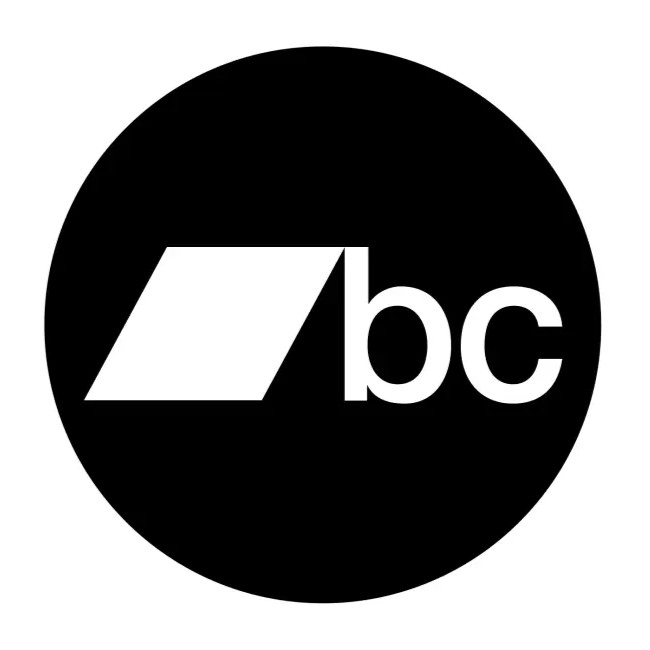Richard Devine: Sound Design and Electronic Alchemy
Richard Devine is a sound designer and electronic artist who hardly needs an introduction for those of us in the world of electronic music creation. He’s a true sonic experimenter who has spent years exploring music technology of all types while trying to find new ways to create sound and move people emotionally.
Based in Atlanta, Devine’s sound design has helped shape the sonic identities of products all around the world. His work can be heard in everything from electric vehicles, such as the Jaguar I-Pace, where he created automotive UI sounds, to major tech platforms like Google Earth VR and Stadia, contributing to sound environments for AI and virtual reality experiences. He has collaborated with a wide range of global brands, including Sony, Coca-Cola, HBO, Microsoft, Tesla, BMW, and Nike, and his work is among the most versatile we know, including also works for film score or video games such as Cyberpunk 2077, Halo, and Doom 4.
Richard Devine: Sound Design and Electronic Alchemy
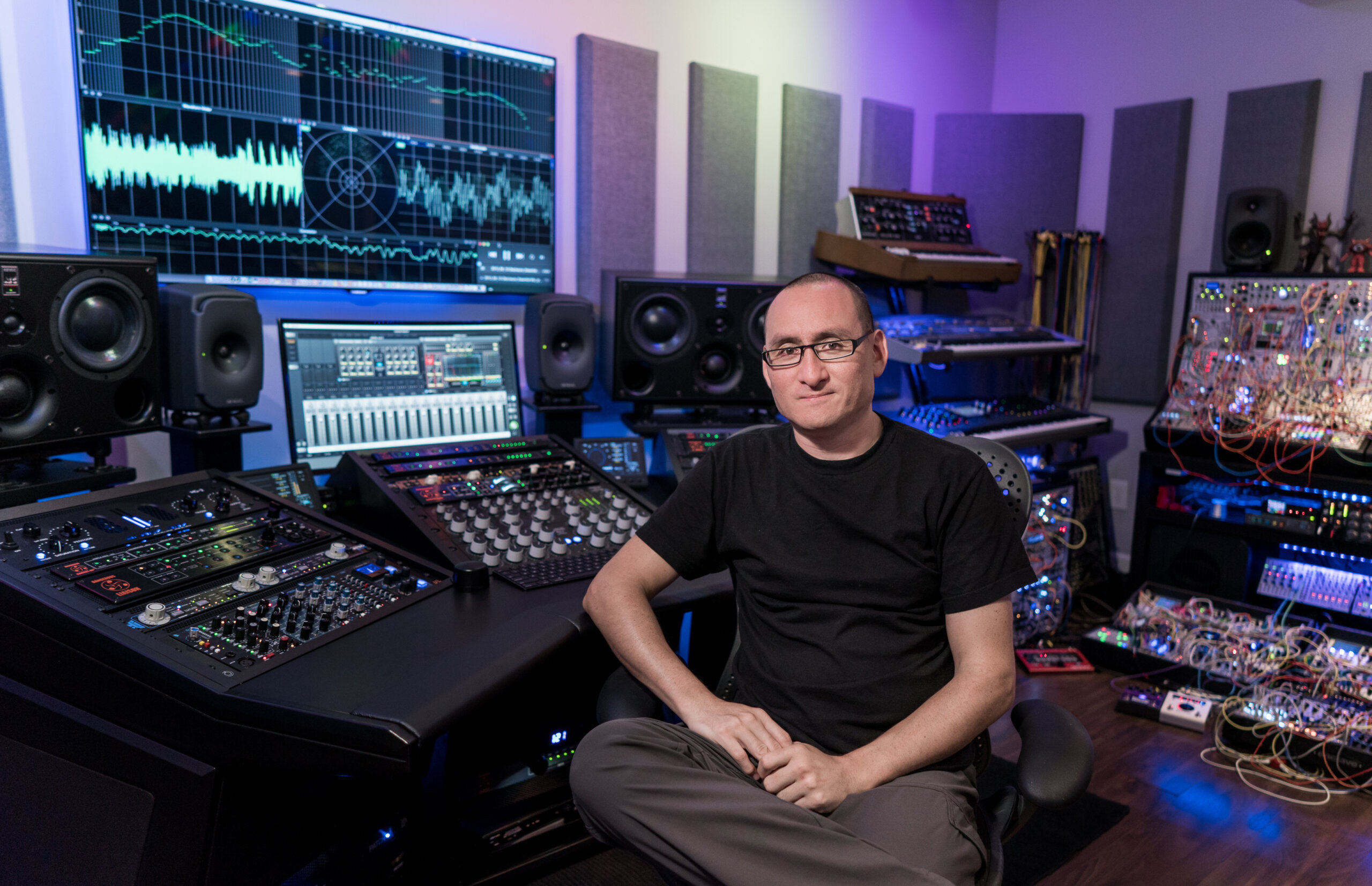
Richard Devine is a sound designer and electronic artist who hardly needs an introduction for those of us in the world of electronic music creation. He’s a true sonic experimenter who has spent years exploring music technology of all types while trying to find new ways to create sound and move people emotionally.
Based in Atlanta, Devine’s sound design has helped shape the sonic identities of products all around the world. His work can be heard in everything from electric vehicles, such as the Jaguar I-Pace, where he created automotive UI sounds, to major tech platforms like Google Earth VR and Stadia, contributing to sound environments for AI and virtual reality experiences. He has collaborated with a wide range of global brands, including Sony, Coca-Cola, HBO, Microsoft, Tesla, BMW, and Nike, and his work is among the most versatile we know, including also works for film score or video games such as Cyberpunk 2077, Halo, and Doom 4.
Devine’s sonic palette feels infinite. If you follow him, you know his studio is a living organism of sound machines, filled with modular synths, drum machines, rare digital gear, and innovative tools, many of which he has helped design. He is known for his ongoing collaboration with companies that are pushing the boundaries of music production. In doing so, he has become an important bridge to the future of sound, amplifying the voices of creators, all large and small, who are focused on innovation and evolution of sound production. His influence also extends to the creation of patches and presets for different hardware and software instrument companies, including Waldorf Music.
“To me [the Quantum], it’s hands down one of the most interesting and inspiring synthesizers to come out this decade. […] This is the first synth that I felt was designed for sound designers looking to push synthesis in new directions. It combines granular/particle, physical modeling, FM, subtractive, and wavetable all in one intuitive, beautifully ergonomic keyboard. It’s a joy to make sounds on, and the sound quality is excellent.” – Richard Devine, interviewed in Orb Mag
When we developed the Quantum, Richard was one of the artists selected to test it before its release and to create factory sounds for the instrument. This happened back in 2018 during the NAMM Show, where he received one of the early models we brought. Richard later received the final production model as well. He is a fan of the instrument and, since then, has also collaborated with us on other projects such as the Nave plugin.
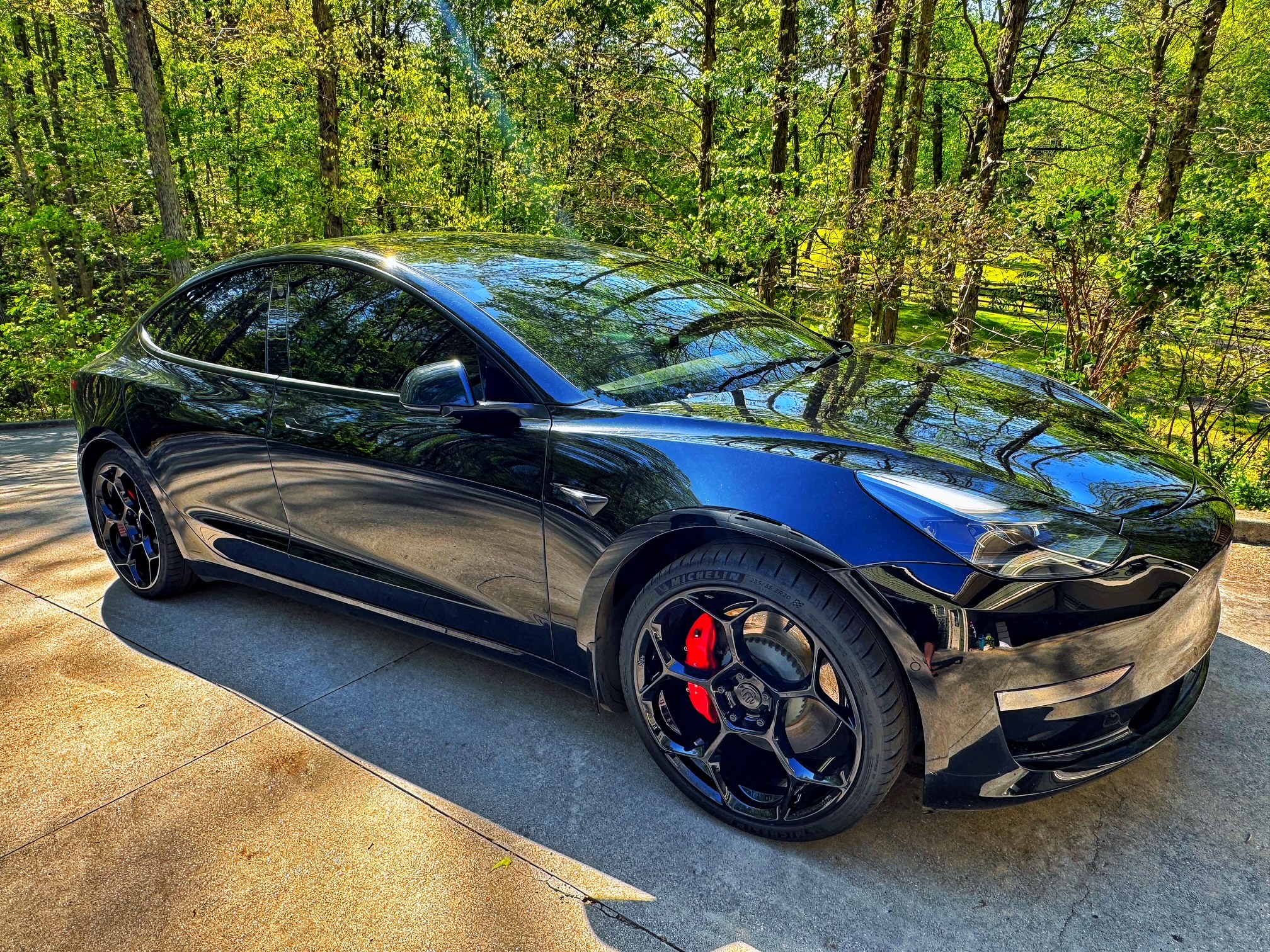

Devine’s sonic palette feels infinite. If you follow him, you know his studio is a living organism of sound machines, filled with modular synths, drum machines, rare digital gear, and innovative tools, many of which he has helped design. He is known for his ongoing collaboration with companies that are pushing the boundaries of music production. In doing so, he has become an important bridge to the future of sound, amplifying the voices of creators, all large and small, who are focused on innovation and evolution of sound production. His influence also extends to the creation of patches and presets for different hardware and software instrument companies, including Waldorf Music.
“To me [the Quantum], it’s hands down one of the most interesting and inspiring synthesizers to come out this decade. […] This is the first synth that I felt was designed for sound designers looking to push synthesis in new directions. It combines granular/particle, physical modeling, FM, subtractive, and wavetable all in one intuitive, beautifully ergonomic keyboard. It’s a joy to make sounds on, and the sound quality is excellent.” – Richard Devine, interviewed in Orb Mag
When we developed the Quantum, Richard was one of the artists selected to test it before its release and to create factory sounds for the instrument. This happened back in 2018 during the NAMM Show, where he received one of the early models we brought. Richard later received the final production model as well. He is a fan of the instrument and, since then, has also collaborated with us on other projects such as the Nave plugin.
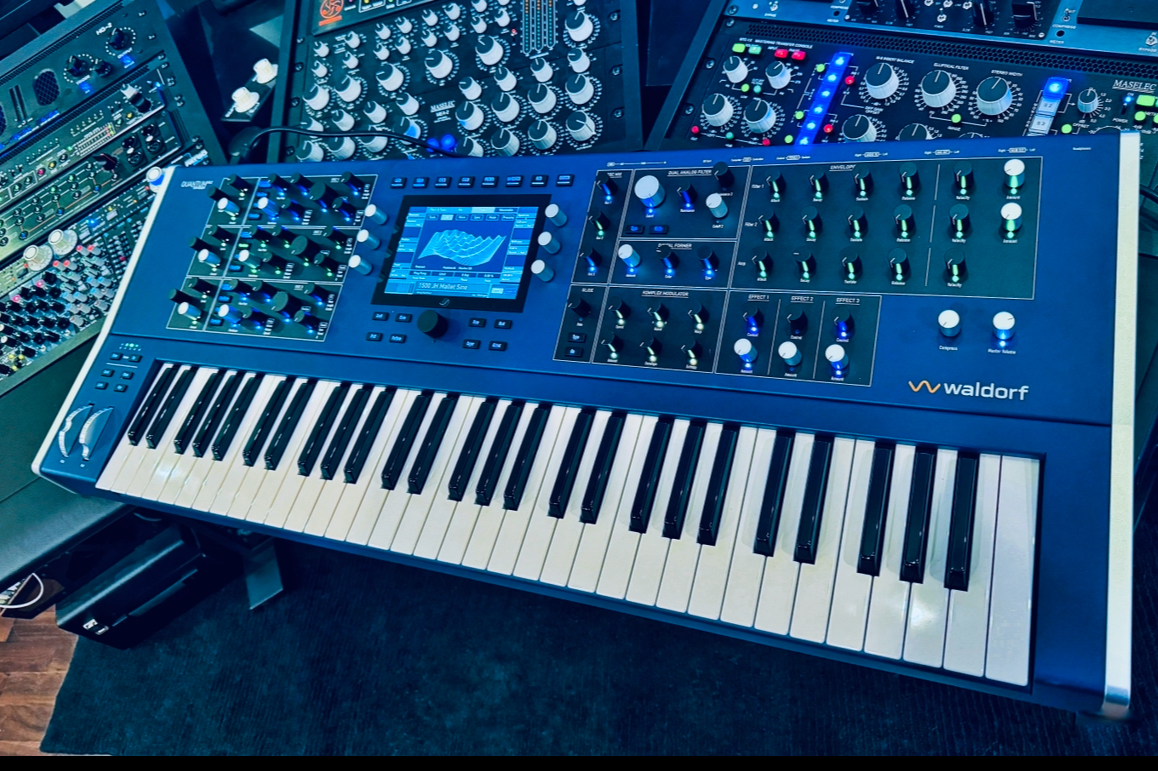
In addition to his acclaimed sound design work, Richard Devine is also well known for his processed, layered sonic creations that blend glitch, IDM, and experimental electronic music. He began his career in the mid-1990s, taking early inspiration from Warp Records artists like Aphex Twin. He was an early adopter of the Eurorack modular format and quickly gained recognition for his use of digital synthesis. His music has been released on respected labels such as Schematic Records, Warp Records, and Sublight.
For us, Richard is not only a respected artist but also a dear friend of Waldorf Music. His approach to music and his expansive experimentation with sound are one of a kind. Whether he’s creating wild sonic landscapes or giving voice to everyday products, we’re certain that Richard Devine will continue to shape the future of electronic music.
We are proud to feature him on our Artist Pages, and we trust his work as someone who truly loves music and sound. For all this and more, we’re excited to share this conversation with him. Enjoy!

In addition to his acclaimed sound design work, Richard Devine is also well known for his processed, layered sonic creations that blend glitch, IDM, and experimental electronic music. He began his career in the mid-1990s, taking early inspiration from Warp Records artists like Aphex Twin. He was an early adopter of the Eurorack modular format and quickly gained recognition for his use of digital synthesis. His music has been released on respected labels such as Schematic Records, Warp Records, and Sublight.
For us, Richard is not only a respected artist but also a dear friend of Waldorf Music. His approach to music and his expansive experimentation with sound are one of a kind. Whether he’s creating wild sonic landscapes or giving voice to everyday products, we’re certain that Richard Devine will continue to shape the future of electronic music.
We are proud to feature him on our Artist Pages, and we trust his work as someone who truly loves music and sound. For all this and more, we’re excited to share this conversation with him. Enjoy!
How would you introduce yourself as an artist?
How would you introduce yourself as an artist?
I am a sound designer and electronic artist. I have always been fascinated with sound and how it can transcend all other mediums to move people emotionally.
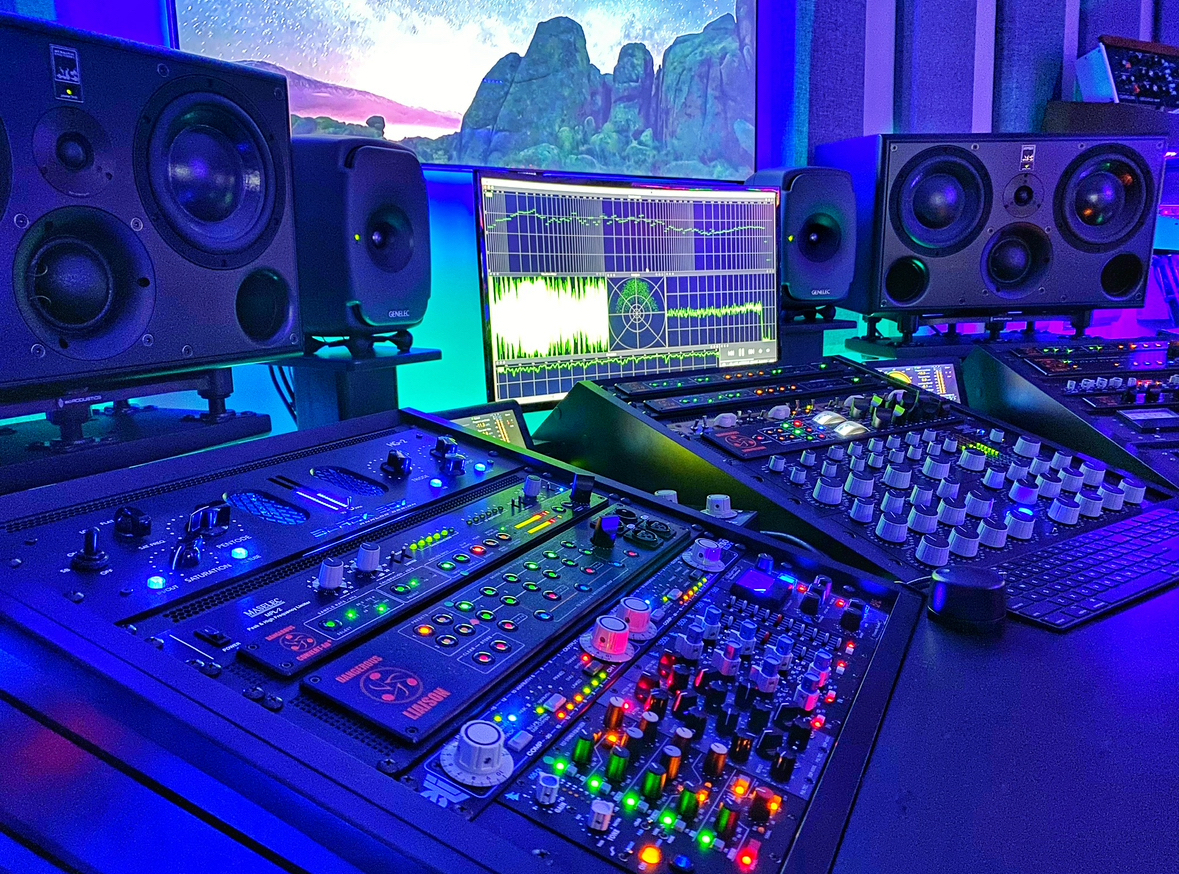
How would you introduce yourself as an artist?
How would you introduce yourself as an artist?
I am a sound designer and electronic artist. I have always been fascinated with sound and how it can transcend all other mediums to move people emotionally.
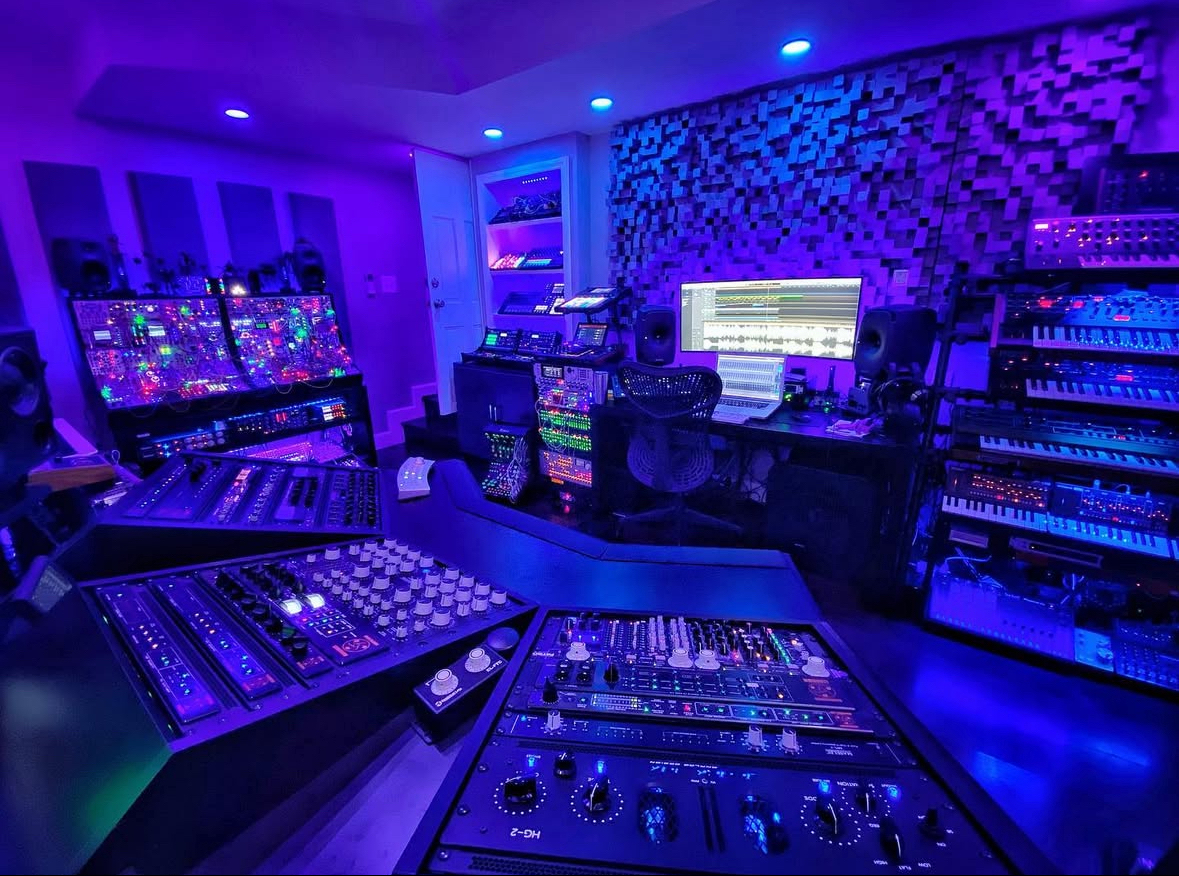
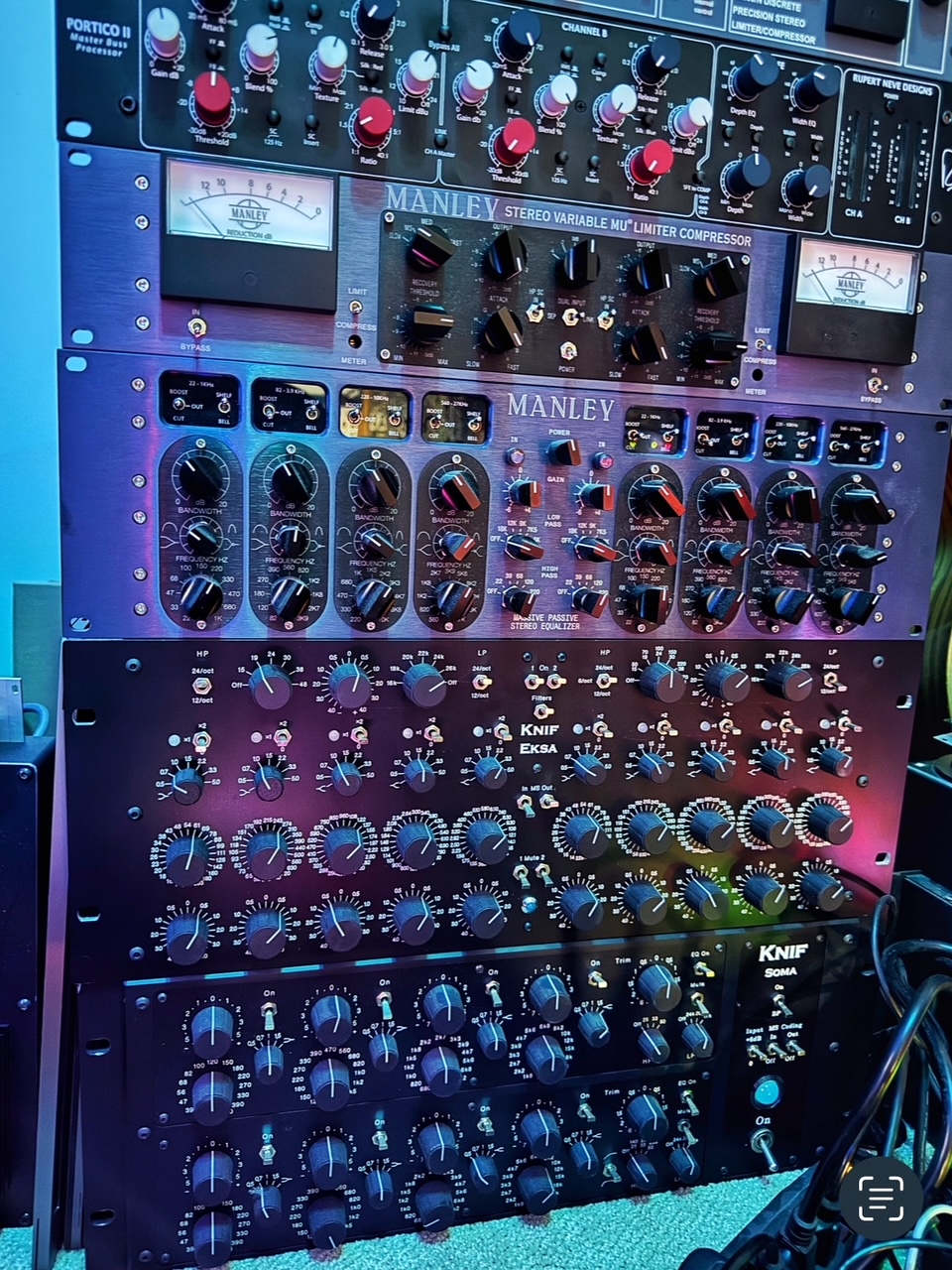
Was there any decisive moment or experience that drew you to synthesis?
It was way back in the 1992-1993 era. I began collecting many vintage analog synthesizers. During this period, many studios here in Atlanta were unloading and selling these instruments to pawn shops and second-hand stores. I could get my hands on some scarce, expensive instruments, but they were considered worth nothing then. I got everything from the ARP-2600 to the Jupiter-6/8. The 2600, in particular, really sparked my interest in learning synthesis. It was the perfect synthesizer to start learning the basics of fundamental synthesis. It was laid out so you could set the sliders up in different combinations to hear how two modules could affect each other in the signal chain. You could also use 66 patch points to cross-modulate between two oscillators (FM) or do other interesting things. It had everything you needed to create a wide variety of sounds.
Was there any decisive moment or experience
that drew you into synthesis?
It was way back in the 1992-1993 era. I began collecting many vintage analog synthesizers. During this period, many studios here in Atlanta were unloading and selling these instruments to pawn shops and second-hand stores. I could get my hands on some scarce, expensive instruments, but they were considered worth nothing then. I got everything from the ARP-2600 to the Jupiter-6/8. The 2600, in particular, really sparked my interest in learning synthesis. It was the perfect synthesizer to start learning the basics of fundamental synthesis. It was laid out so you could set the sliders up in different combinations to hear how two modules could affect each other in the signal chain. You could also use 66 patch points to cross-modulate between two oscillators (FM) or do other interesting things. It had everything you needed to create a wide variety of sounds.

What time of day or night will we meet you most often in your studio?
What time of day or night will we meet you most often in your studio?
Before I had kids, I would stay up all night listening to records on my parents’ old record player. I would hear as much as I would play. Listening is a big part of working as an artist. It’s where you draw inspiration and start to learn the techniques of what other musicians are doing. I started out DJing at the age of 15. I started playing small house parties, then eventually started playing actively in the Atlanta rave scene in the early ’90s. I have always liked to include some live aspects in my DJ sets, so I usually bring out a Roland TB-303 and TR-606 with an effect pedal and mix records between playing live “acid” tracks on the fly. It was the start of my live performances and helped me gain confidence and the skills to do my own thing instead of playing other people’s music. My ultimate goal back then was to build up my little studio and start making my music to press on to vinyl to play out.
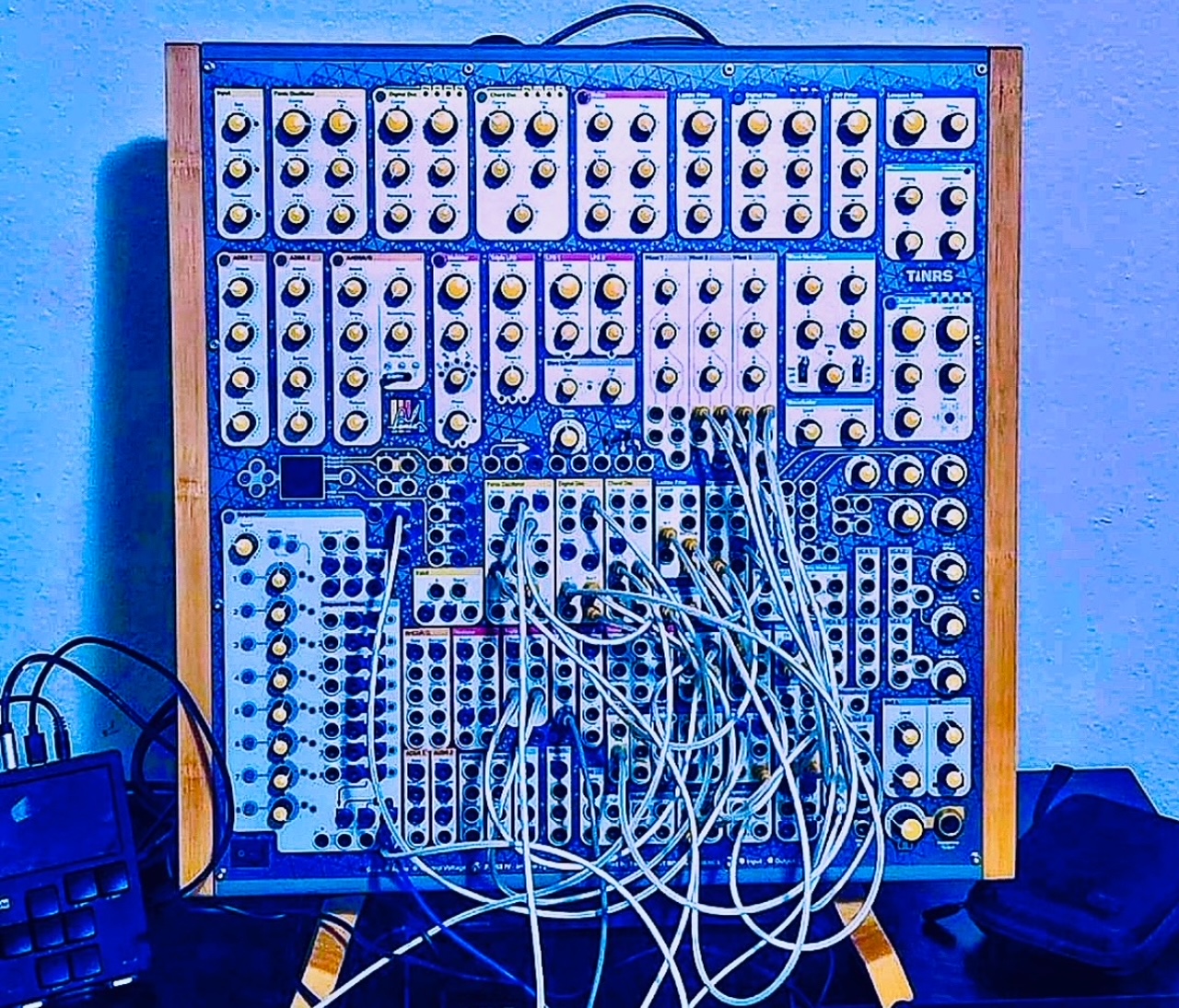
What time of day or night will we meet you most often in your studio?
Before I had kids, I would stay up all night listening to records on my parents’ old record player. I would hear as much as I would play. Listening is a big part of working as an artist. It’s where you draw inspiration and start to learn the techniques of what other musicians are doing. I started out DJing at the age of 15. I started playing small house parties, then eventually started playing actively in the Atlanta rave scene in the early ’90s. I have always liked to include some live aspects in my DJ sets, so I usually bring out a Roland TB-303 and TR-606 with an effect pedal and mix records between playing live “acid” tracks on the fly. It was the start of my live performances and helped me gain confidence and the skills to do my own thing instead of playing other people’s music. My ultimate goal back then was to build up my little studio and start making my music to press on to vinyl to play out.

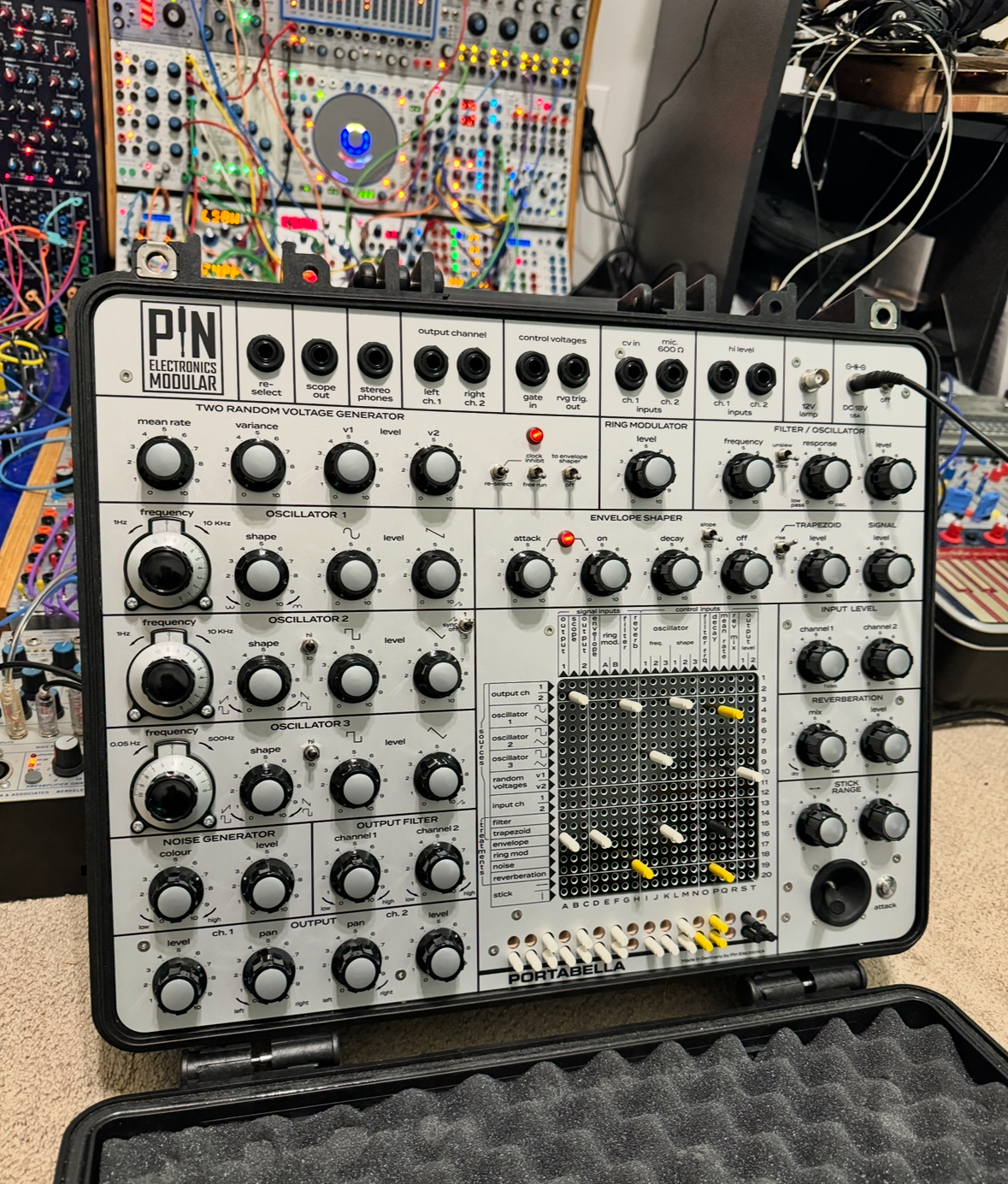
What’s your typical workflow when starting a new project?
It depends on the project. Sometimes, I record sounds with my portable field recorders. Other times, I like to create a lot of my stuff from scratch with synthesis from the ground up. There is no right or wrong way to start. Lately, I have been obsessed with modular synthesis. I have built many systems: Buchla, Serge, and a sizable Eurorack system. I love patching from scratch with an idea in my head. Sometimes, I reach my goal; other times, something spontaneous will happen by accident that I didn’t anticipate, which becomes the track or idea. I love that, and I have never had an instrument give me that feedback. It’s like an endless journey with no rules. The best approach, and trying lots of different patches can get you so many variations and interesting timbres. It’s been a lot of fun to make music with these machines.
What’s your typical workflow when starting a new project? Do you have a preferred instrument or method to sketch ideas?
It depends on the project. Sometimes, I record sounds with my portable field recorders. Other times, I like to create a lot of my stuff from scratch with synthesis from the ground up. There is no right or wrong way to start. Lately, I have been obsessed with modular synthesis. I have built many systems: Buchla, Serge, and a sizable Eurorack system. I love patching from scratch with an idea in my head. Sometimes, I reach my goal; other times, something spontaneous will happen by accident that I didn’t anticipate, which becomes the track or idea. I love that, and I have never had an instrument give me that feedback. It’s like an endless journey with no rules. The best approach, and trying lots of different patches can get you so many variations and interesting timbres. It’s been a lot of fun to make music with these machines.
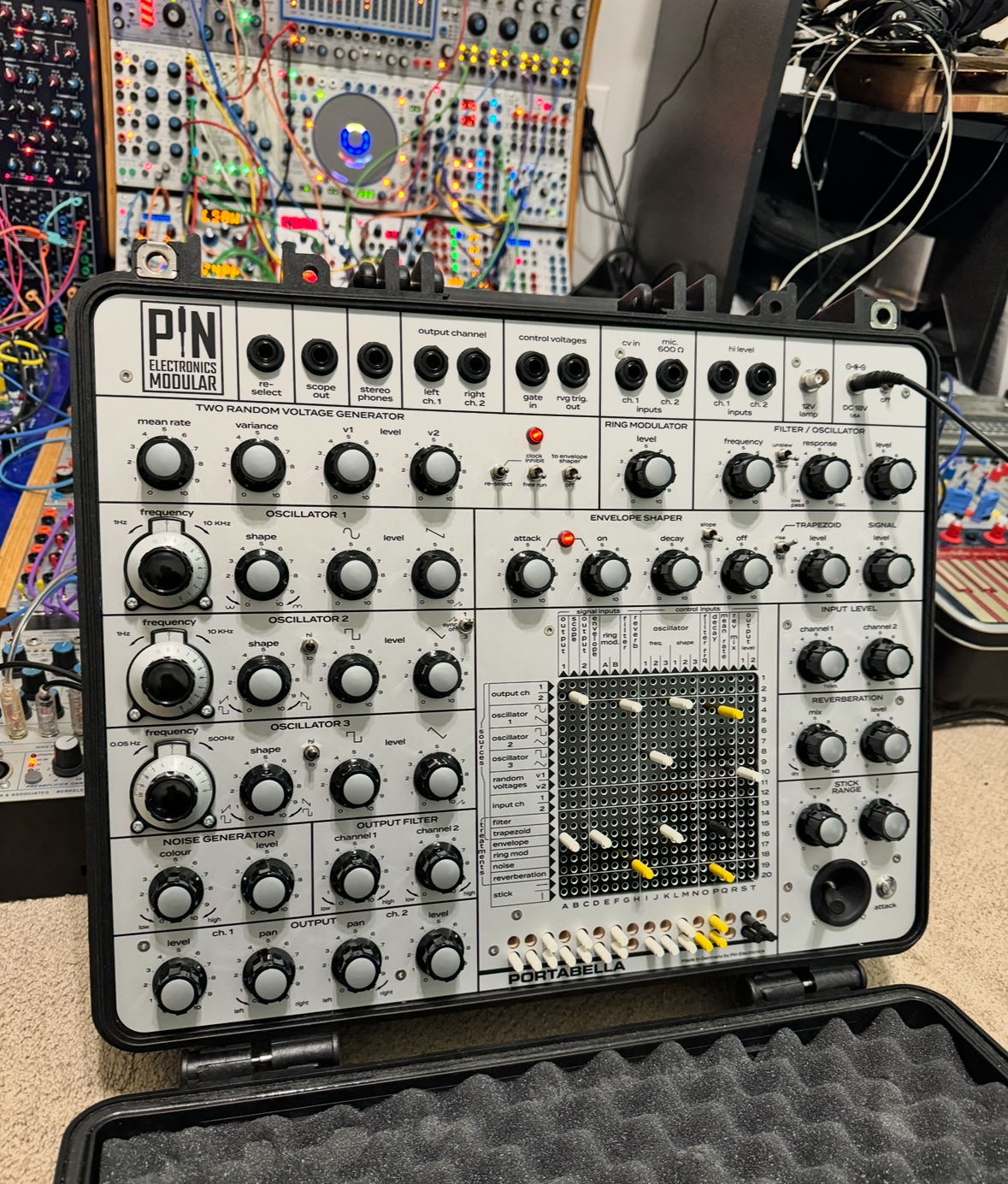
How do you balance improvisation and structure in your work?
I think improvisation is essential with my live modular performances. It’s where you can have these moments of spontaneous things happening and changing the course of your live show. I love that sometimes it’s fascinating what you come up with, and other times it could all fall apart at any second. It’s like you’re riding this fine line of perfection and a complete disaster, which can bring a lot of excitement and keep you on the edge of your seat the entire performance. You have to be focused and in the moment to pull it off. That is an enjoyable aspect of performing live with modular synthesizers.
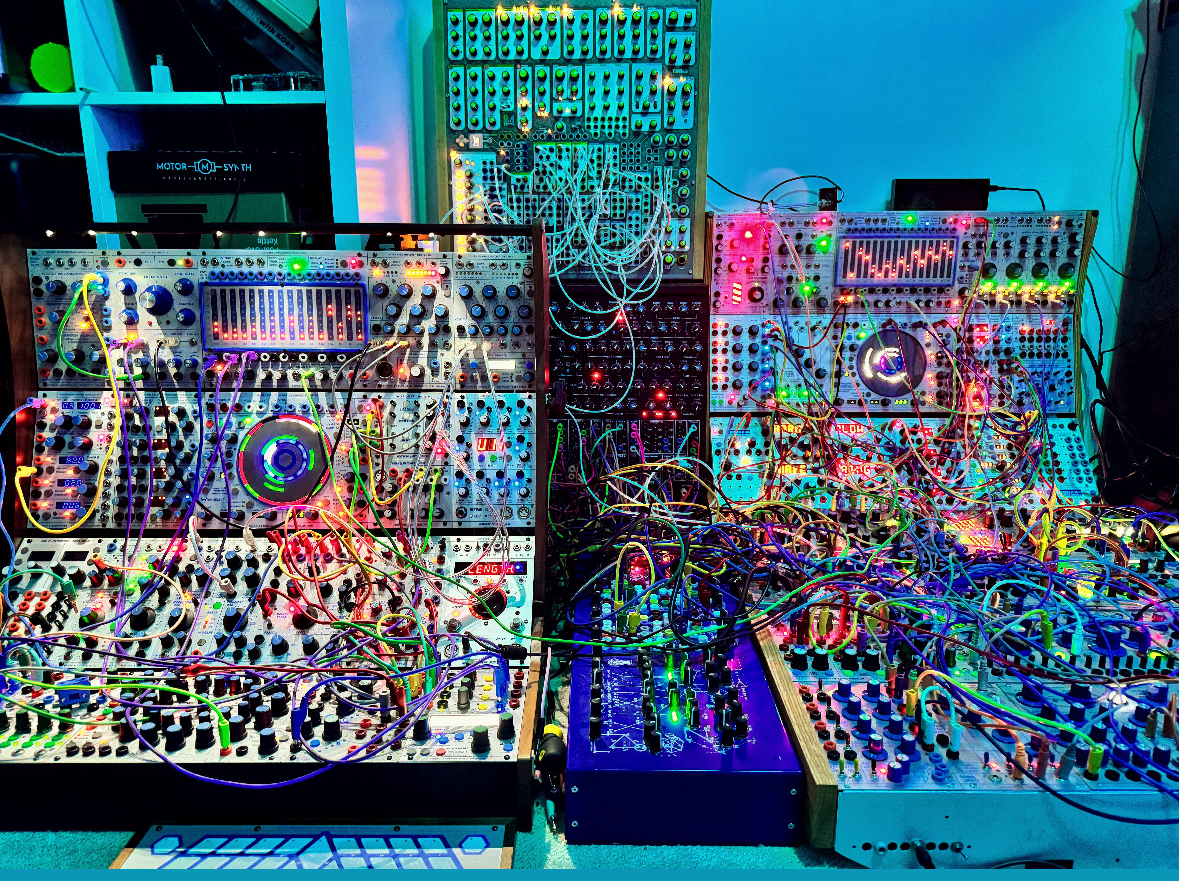
How do you balance improvisation and structure in your work?
I think improvisation is essential with my live modular performances. It’s where you can have these moments of spontaneous things happening and changing the course of your live show. I love that sometimes it’s fascinating what you come up with, and other times it could all fall apart at any second. It’s like you’re riding this fine line of perfection and a complete disaster, which can bring a lot of excitement and keep you on the edge of your seat the entire performance. You have to be focused and in the moment to pull it off. That is an enjoyable aspect of performing live with modular synthesizers.

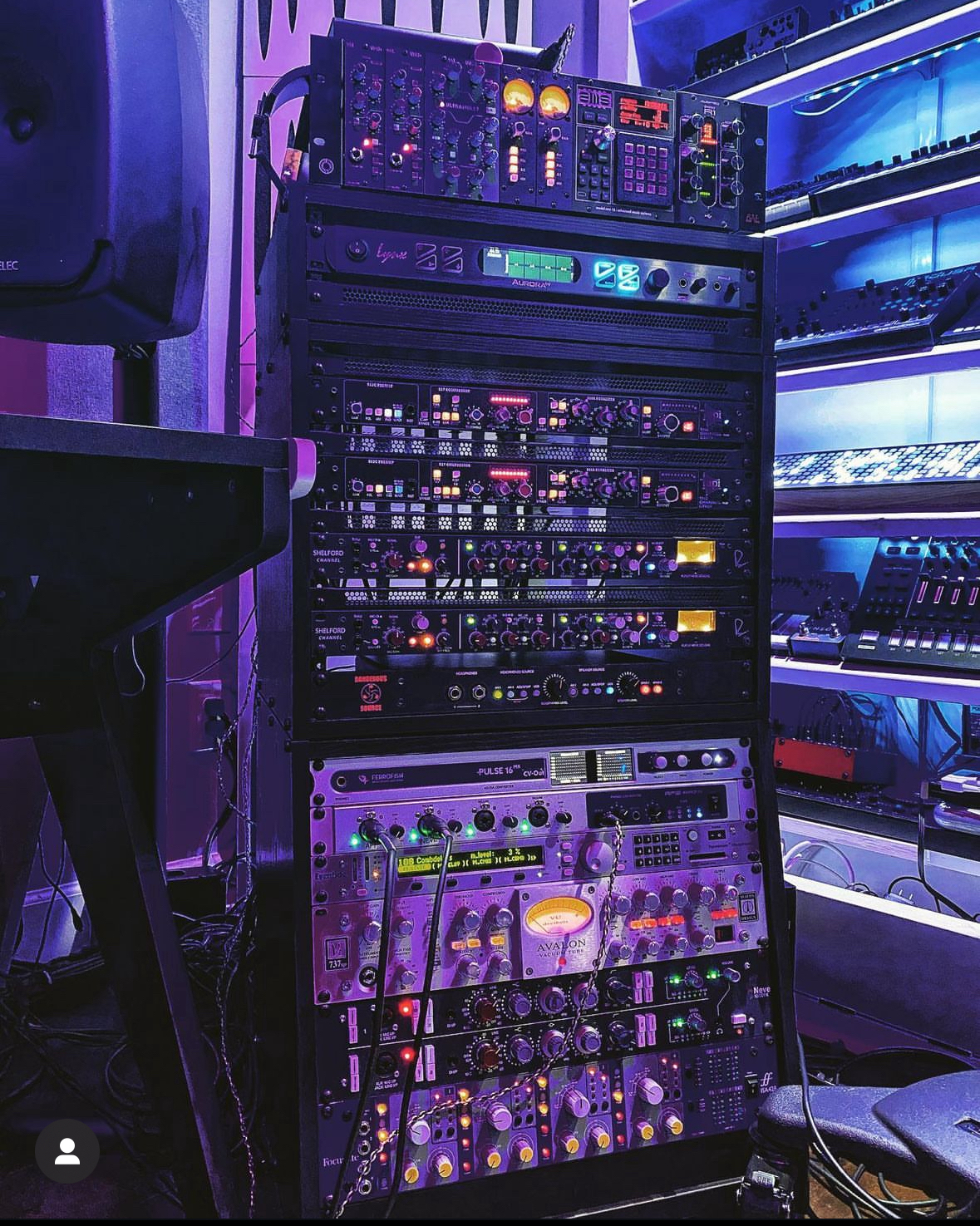
How do you decide on the sonic palette for a specific project?
How do you decide on the sonic palette for a specific project?
That’s a good question. Suppose it’s a track or one of my pieces. I capture or create sounds that evoke a specific mood or feeling within the pieces. So I try to find sounds and timbres that will match that feel. Sometimes, I must design sounds on synthesizers or software synthesis applications from the ground up. I am not a purist; I will use a cheap 1 dollar toy vs an extensive Buchla modular system to get what I want. It’s all about what you create at the end of the day and not much about the tools.
How do you decide on the sonic palette for a specific project?
That’s a good question. Suppose it’s a track or one of my pieces. I capture or create sounds that evoke a specific mood or feeling within the pieces. So I try to find sounds and timbres that will match that feel. Sometimes, I must design sounds on synthesizers or software synthesis applications from the ground up. I am not a purist; I will use a cheap 1 dollar toy vs an extensive Buchla modular system to get what I want. It’s all about what you create at the end of the day and not much about the tools.

What do you enjoy most when you’re in your studio?
Creating new music is my favorite thing; sometimes, I experiment with new gear and try to adapt them into my workflow. My studio is more like a classroom, where I constantly learn new things and try new techniques. I continuously try to improve my skills and push my sound in new directions.
How do you stay curious and keep expanding your perception of what music and sound can be?
They are intertwined, as a single sound can spark a complete idea for a new composition. Or I can start the composition and experiment with different sounds until I find the right one to fit a specific part or section of a piece. It all depends on the project and what I am trying to achieve. As for staying curious, I have always been interested in constantly researching new instruments, software, and hardware in search of new sounds. I continuously try to create sounds and timbres people have never heard before.
What do you enjoy most when you’re in your studio?
Creating new music is my favorite thing; sometimes, I experiment with new gear and try to adapt them into my workflow. My studio is more like a classroom, where I constantly learn new things and try new techniques. I continuously try to improve my skills and push my sound in new directions.
How do you stay curious and keep expanding your perception of what music and sound can be?
They are intertwined, as a single sound can spark a complete idea for a new composition. Or I can start the composition and experiment with different sounds until I find the right one to fit a specific part or section of a piece. It all depends on the project and what I am trying to achieve. As for staying curious, I have always been interested in constantly researching new instruments, software, and hardware in search of new sounds. I continuously try to create sounds and timbres people have never heard before.
What inspires you?
Everything: nature walks, the ocean, forests, traveling to faraway places, modern architecture, going to art museums, concerts or festivals, listening to other people’s music. Sometimes, I hear a metal pot hit something in my kitchen, and that sound of a resonating hit will inspire me to write a song. I once made a track entirely out of my garbage can. There is a whole world of new sounds to capture and explore. Lately, I have been doing a lot of ultrasonic bat recordings and underwater recordings using hydrophones, which has, surprisingly, helped me discover so many cool new sounds.
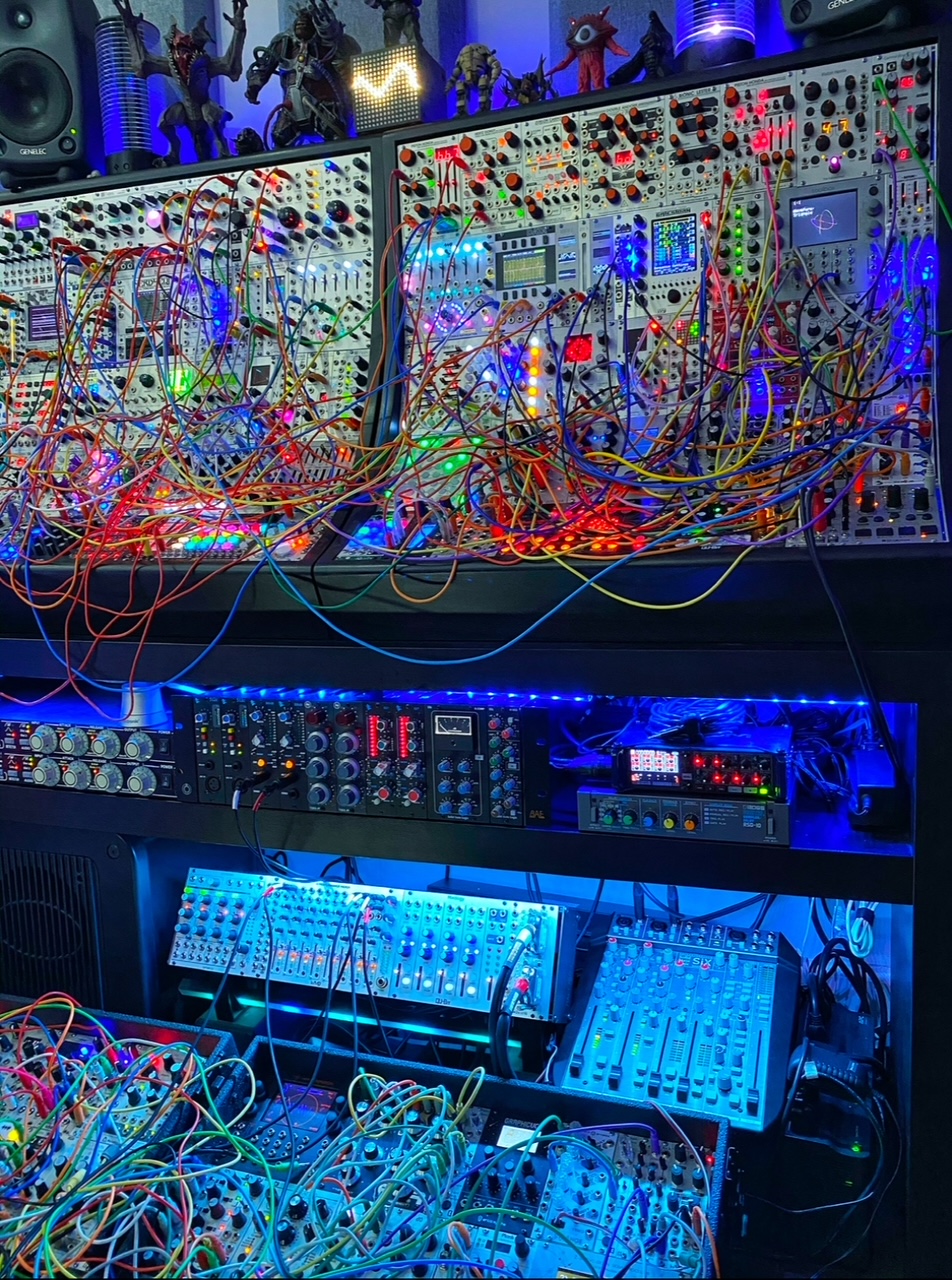
Can you share an example of an unusual sound source you’ve used and how it made it into your work?
I did some Hydrophone recordings down off the Florida coast. It was 3:00 AM, and I used 4 Aquarin Audio H2-XLR Hydrophones. I set them all in a quad matrix to capture four audio channels. I remember the crackling sound of shrimp feeding; it was the most granular sound I had ever heard. I used it on my last album “SortLave” as part of the granular swooshing textures in this piece called “Revsic”.
What are your “must-have” tools in the studio right now?
It would be my new MacBook Pro M4 Max. It’s an incredible machine. I can write music anywhere with it. So many great new plugins are coming out lately, and I have been diving back into the DSP world, using my modular synthesizers and researching a bit of AI ML-based systems.
What was your first synthesizer?
It was the Roland SH-101, followed by the Arp-2600.
What are your “must-have” tools in the studio right now?
It would be my new MacBook Pro M4 Max. It’s an incredible machine. I can write music anywhere with it. So many great new plugins are coming out lately, and I have been diving back into the DSP world, using my modular synthesizers and researching a bit of AI ML-based systems.
What was your first synthesizer?
It was the Roland SH-101, followed by the Arp-2600.
What do you appreciate most in a synthesizer?
I like a synth with good ergonomics, ease of operation, and a synthesizer capable of creating various sounds. I like having a mod matrix, many modulation options, and an easy way to assign these assignments to various parameters around the synth. I want to get things moving reasonably quickly. So looping envelopes, MSEG editors, and multiple LFOs are essential for me.
What’s your first step when approaching a new synth?
Well, it’s first looking at the sound sources and testing the range of the oscillators, seeing what options I have for internal patching or routing. How do the filters sound, and how snappy are the envelopes? I like to exercise often. I want to create a new piece when I get a new synth. It’s a great way to discover any synth’s strengths and weaknesses.
What do you appreciate most in a synthesizer?
I like a synth with good ergonomics, ease of operation, and a synthesizer capable of creating various sounds. I like having a mod matrix, many modulation options, and an easy way to assign these assignments to various parameters around the synth. I want to get things moving reasonably quickly. So looping envelopes, MSEG editors, and multiple LFOs are essential for me.
What’s your first step when approaching a new synth?
Well, it’s first looking at the sound sources and testing the range of the oscillators, seeing what options I have for internal patching or routing. How do the filters sound, and how snappy are the envelopes? I like to exercise often. I want to create a new piece when I get a new synth. It’s a great way to discover any synth’s strengths and weaknesses.
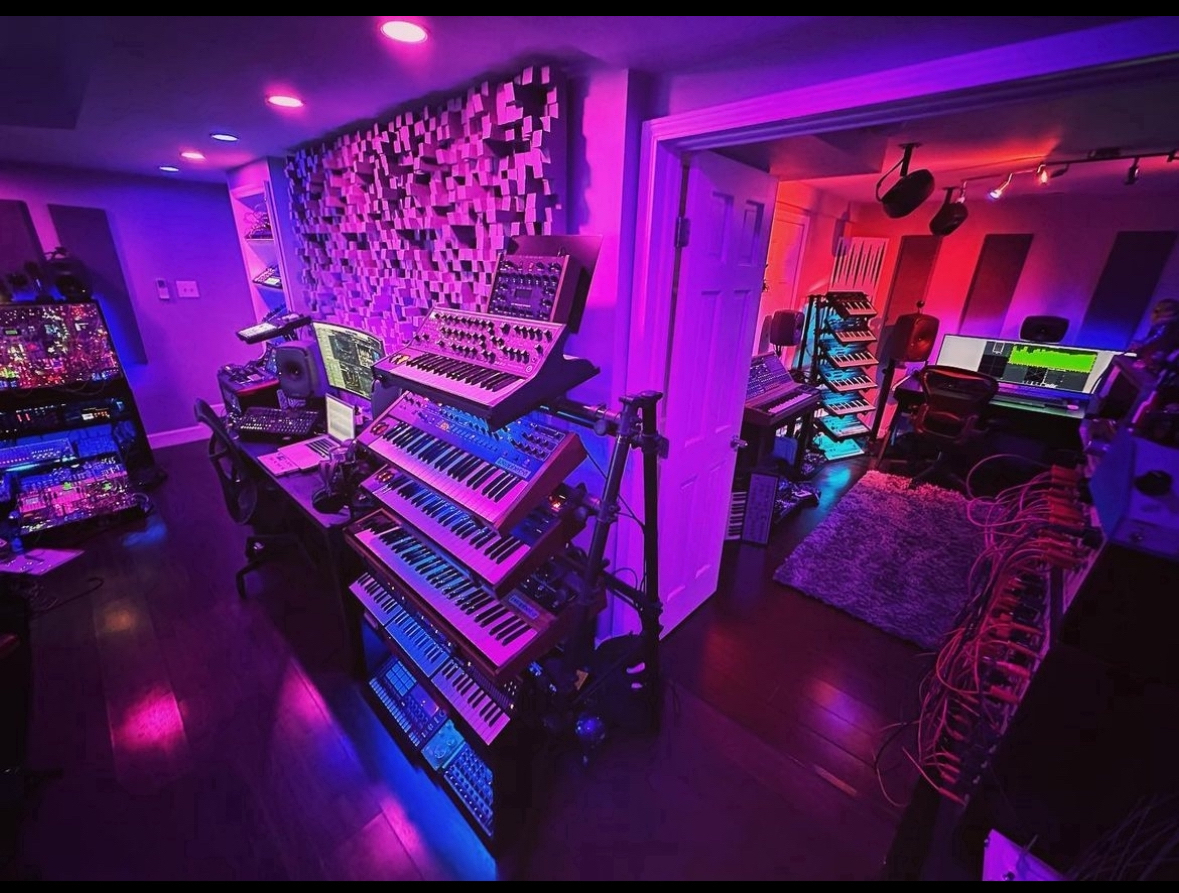
What was your first interaction with Waldorf Music?
What was your first interaction with Waldorf Music?
The first Waldorf synth I got was the Microwave XT, which I loved. I used it for many years on many of my early records. I soon got a Pulse and the Waldorf Blofeld keyboard, which is still amazing.

What was your first interaction with Waldorf Music?
What was your first interaction with Waldorf Music?
The first Waldorf synth I got was the Microwave XT, which I loved. I used it for many years on many of my early records. I soon got a Pulse and the Waldorf Blofeld keyboard, which is still amazing.
What is your journey with Quantum?
First off was the look and design of the keyboard. Axel Hartmann did a great job on the industrial design. It’s one of the most gorgeous synths I have ever encountered. Everything is color-coded for easy navigation and mod assignments. The touch screen was terrific for quickly switching to different pages and changing parameters. The Mod matrix is where all the fun happens for me. I love that you can assign almost anything to anything in that synth. It’s so fun to program new sounds on it. I sometimes get lost for hours, tweaking and creating custom presets for my music or projects. It’s definitely one of the best synthesizers in the last 10 years. The easy programming and the layout make for a swift process of creating new sounds.
How was the experience of creating factory sounds for it?
I had a blast making sounds for the original Quantum. I was already familiar with it as I worked with Rolf Wöhrmann and did sound design on many of his iOS apps, including the “Nave wavetable” synthesizer. I believe the Quatum is an evolution from Nave, so I was already familiar with the layout and made some exciting sounds for the iOS app version, which you can now run as a VST/AU plugin on your DAW. I still use it on projects; it’s versatile and fun to use as a synthesizer.
What is your journey with Quantum?
First off was the look and design of the keyboard. Axel Hartmann did a great job on the industrial design. It’s one of the most gorgeous synths I have ever encountered. Everything is color-coded for easy navigation and mod assignments. The touch screen was terrific for quickly switching to different pages and changing parameters. The Mod matrix is where all the fun happens for me. I love that you can assign almost anything to anything in that synth. It’s so fun to program new sounds on it. I sometimes get lost for hours, tweaking and creating custom presets for my music or projects. It’s definitely one of the best synthesizers in the last 10 years. The easy programming and the layout make for a swift process of creating new sounds.
How was the experience of creating factory sounds for it?
I had a blast making sounds for the original Quantum. I was already familiar with it as I worked with Rolf Wöhrmann and did sound design on many of his iOS apps, including the “Nave wavetable” synthesizer. I believe the Quatum is an evolution from Nave, so I was already familiar with the layout and made some exciting sounds for the iOS app version, which you can now run as a VST/AU plugin on your DAW. I still use it on projects; it’s versatile and fun to use as a synthesizer.
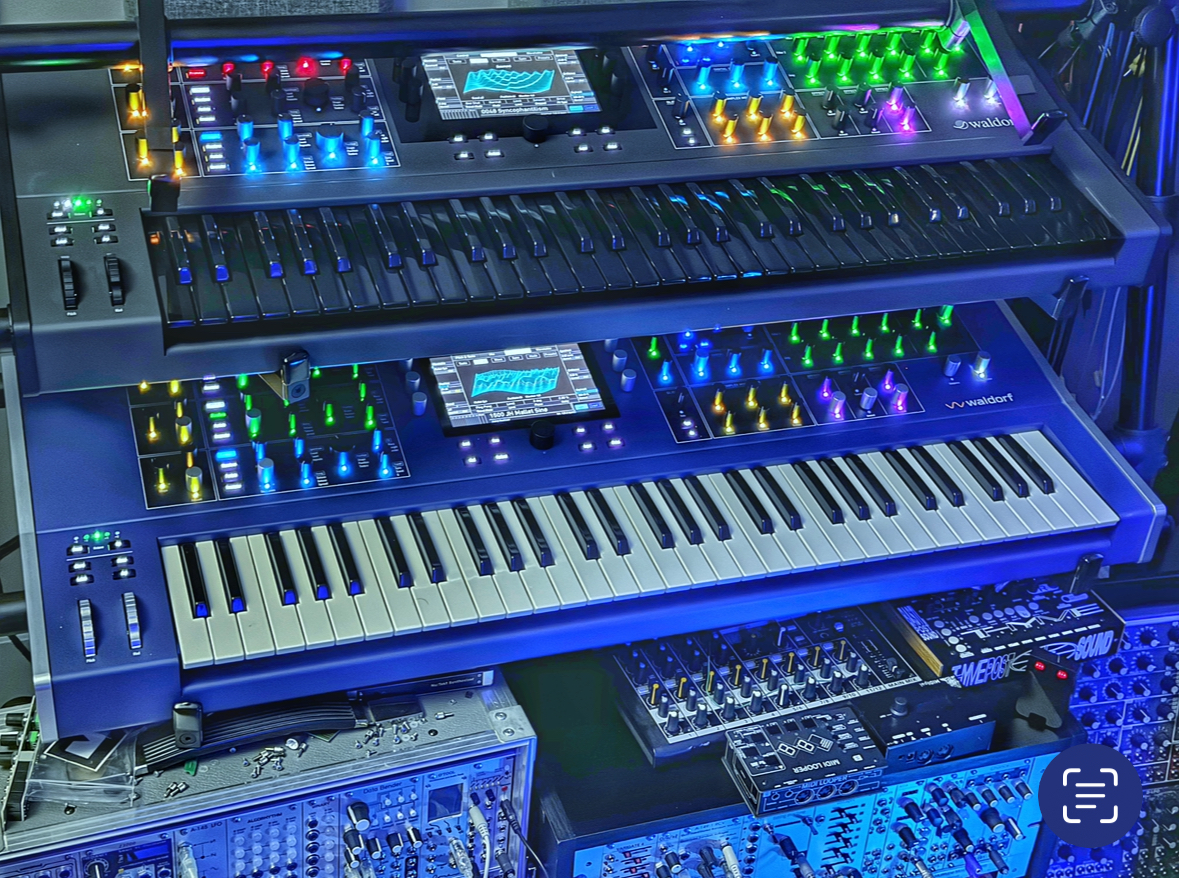
What role do Waldorf synths play in your music today?
I use two Waldorf Quantums here daily for sound design projects and my music. They are the two most used polysynths in my collection. I have one of the 30 “Dark Quantum limited edition” models and the latest V2 Quantum. I mainly use them for sample processing and wavetable synthesis. They are sound design beasts and have made their way into almost every project I have worked on lately.
What has been your most memorable or challenging sound design project?
I couldn’t pick a specific project as I have done many. I remember working on Microsoft’s Windows sounds for the “Gears of War” Campaign, and I also worked on the development team designing many sounds for that game. The most challenging project was designing sounds for the Jaguar I-Pace electric car. It was a 4-year process, but I loved how it turned out. I was responsible for creating all the car sounds, including the exterior and interior EV engine sounds, as well as all the in-system notifications and alert sounds. Seeing something you worked on in the world and the car showrooms was incredible.
What role do Waldorf synths play in your music today?
I use two Waldorf Quantums here daily for sound design projects and my music. They are the two most used polysynths in my collection. I have one of the 30 “Dark Quantum limited edition” models and the latest V2 Quantum. I mainly use them for sample processing and wavetable synthesis. They are sound design beasts and have made their way into almost every project I have worked on lately.
What has been your most memorable or challenging sound design project?
I couldn’t pick a specific project as I have done many. I remember working on Microsoft’s Windows sounds for the “Gears of War” Campaign, and I also worked on the development team designing many sounds for that game. The most challenging project was designing sounds for the Jaguar I-Pace electric car. It was a 4-year process, but I loved how it turned out. I was responsible for creating all the car sounds, including the exterior and interior EV engine sounds, as well as all the in-system notifications and alert sounds. Seeing something you worked on in the world and the car showrooms was incredible.
How does your creative process adapt to these different contexts? Where do you get inspiration from?
My inspiration can come from many other places, such as walking in my backyard on a nature trail. Take a studio break to go to an art museum or concert. Sometimes, it’s best to take a step back and take a break to re-evaluate what you’re working on so it resets your brain and gives you a new perspective on the project or composition.
How does your creative process adapt to these different contexts? Where do you get inspiration from?
My inspiration can come from many other places, such as walking in my backyard on a nature trail. Take a studio break to go to an art museum or concert. Sometimes, it’s best to take a step back and take a break to re-evaluate what you’re working on so it resets your brain and gives you a new perspective on the project or composition.
How do you balance working on projects for others with your music? Is there any way in which they might interfere with each other?
I usually take care of my sound design work during the daytime and work on my music later in the evening or at night after I get my kids to bed. I feel more creative when I don’t have any distractions or calls during the day and can focus on my music.
How would you describe music today after all these years of experimentation? How has your perception of music evolved?
A lot has changed in the electronic music world. There are a lot more people making it now. It’s much more accessible and easy to get into. We are now seeing AI ML and assistive writing tools hit the market. The next few years will be exciting with all these new AI-based generative music tools.
How do you balance working on projects for others with your music? Is there any way in which they might interfere with each other?
I usually take care of my sound design work during the daytime and work on my music later in the evening or at night after I get my kids to bed. I feel more creative when I don’t have any distractions or calls during the day and can focus on my music.
How would you describe music today after all these years of experimentation? How has your perception of music evolved?
A lot has changed in the electronic music world. There are a lot more people making it now. It’s much more accessible and easy to get into. We are now seeing AI ML and assistive writing tools hit the market. The next few years will be exciting with all these new AI-based generative music tools.
What excites you most about the current electronic music scene (from both an artist and gear developer perspective)?
I am most excited about all the ML AI tools starting to hit the market, especially ML-based systems that allow you to train the engines with your own data training sets. I am looking for ways to abuse and confuse the algorithms to develop new sounds based on all my sounds.
You’re often seen exploring the latest tools in music production. What are your thoughts about the future of electronic music?
Like I said above, I feel that adaptive assistive writing and AI music tools are going to be the future for many producers. Making music will get much easier but may be more boring. I am curious to see how this will affect everything as more and more of these tools and systems are hitting the market now.
What excites you most about the current electronic music scene (from both an artist and gear developer perspective)?
I am most excited about all the ML AI tools starting to hit the market, especially ML-based systems that allow you to train the engines with your own data training sets. I am looking for ways to abuse and confuse the algorithms to develop new sounds based on all my sounds.
You’re often seen exploring the latest tools in music production. What are your thoughts about the future of electronic music?
Like I said above, I feel that adaptive assistive writing and AI music tools are going to be the future for many producers. Making music will get much easier but may be more boring. I am curious to see how this will affect everything as more and more of these tools and systems are hitting the market now.

What advice would you give to new sound designers or composers?
Stay in school, always keep an open mind, and be willing to constantly learn new things and try to push yourself into new territories.
What projects are you working on, and what gear are you using most?
I am currently working on finishing up my new album for Planet-Mu records. I hope to have it finished by the end of the year. I am also building a new studio, which is taking much longer than I expected.
What advice would you give to new sound designers or composers?
Stay in school, always keep an open mind, and be willing to constantly learn new things and try to push yourself into new territories.
What projects are you working on, and what gear are you using most?
I am currently working on finishing up my new album for Planet-Mu records. I hope to have it finished by the end of the year. I am also building a new studio, which is taking much longer than I expected.

